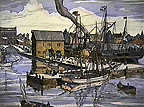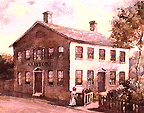


|
Toronto: Stories from the Life of a City. Part I: York.
Produced by Russell
Floren. Subject Heading:
Grades 8 and up / Ages 13 and up.
|



Katherine Matthews is a Teacher/Librarian at the Centre for Urban and Community Studies, University of Toronto.
To comment on this title or this review, send mail to cmeditor@mts.net
![]()
Copyright © 1995 the Manitoba Library Association.
Reproduction for personal use is permitted only if this copyright notice
is maintained. Any other reproduction is prohibited without permission.
Published by
The Manitoba Library Association
ISSN 1201-9364
 Go back to CM Welcome page
Go back to CM Welcome page
 Go back to Table of Contents for this Issue
Go back to Table of Contents for this Issue